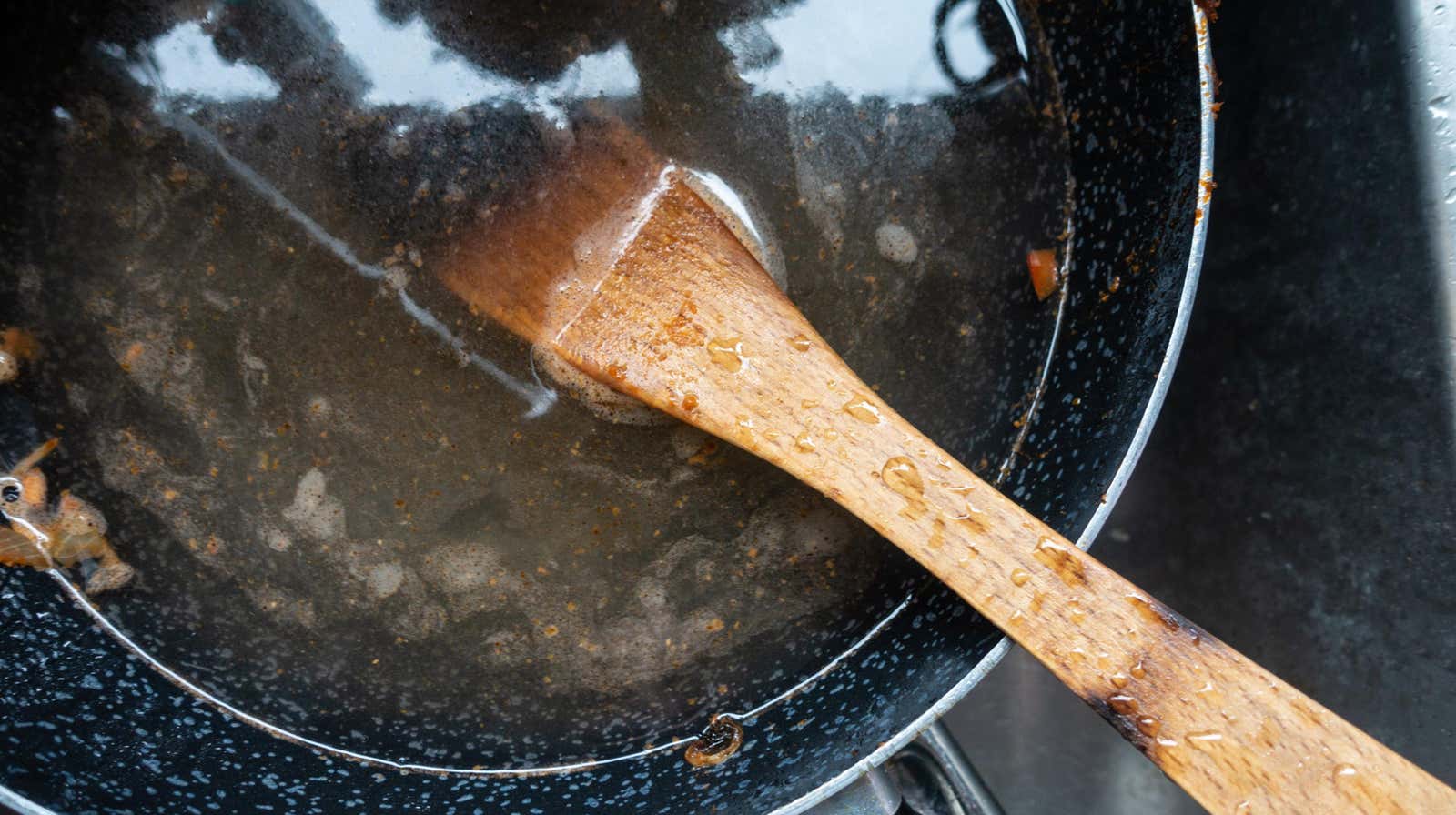You’re Soaking Dishes Incorrectly

“Soaking the dishes” has become shorthand for “not actually washing the dishes,” and for the most part, that’s true. Many people believe that soap acts as a solvent, so if you just fill a pot of crust with soapy water, it will magically dissolve – and the longer you leave it, the better. Plot twist: The solvent in the dishwashing scenario is water, not soap or detergent, and like many solvents, water works best when it’s hot.
This is the real reason to wash dishes with hot water. Your faucet doesn’t get hot enough to kill bacteria – that’s what soap is designed to do – but the heat does help dissolve and remove anything stuck on your dishes. This is why soaking the pot overnight never works the way you want it to: By morning, the hot water you started with is at stable room temperature and its solvent power is greatly reduced. If you’re dealing with a mess that won’t budge with a soapy sponge and elbow grease, the only way out is to briefly soak in very hot water . Here’s how to do it.
Fill a bowl with the hottest water your faucet can handle, add some soap if you like, and let it soak in for a few minutes. The exact soak time will vary depending on the size of the cookware you’re dealing with: smaller cookware holds less water and therefore cools faster, so it may only take one or two minutes, while larger pots can hold heat in within 10 or 15 minutes. The goal is to make your dish as hot as the water it contains, so as long as you don’t let it cool it’s fine. While the water is soaking, wash other dishes, wipe down tables, or whatever else you need to do, then pour out most of the soaking water, add some soap to the remaining water, and get to cleaning. The combination of a hot surface and concentrated soapy water should remove everything easily.
If you’re still unlucky, you might consider “turbo soaking”: fill your pot or pan almost completely with water, then put it back on the stove and bring it to a boil. Turn off the heat, let stand for a few minutes, then carefully drain off most of the water. This time, add some soap and some cold water to bring the contents up to a temperature where your skin won’t melt. (Safety first!) This method will dissolve even the toughest crust and save you the tyranny of a sink full of soaking dishes.